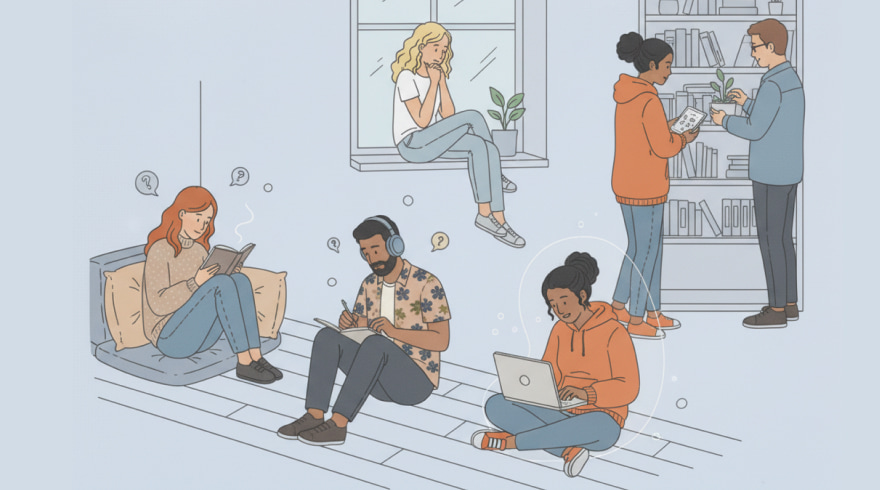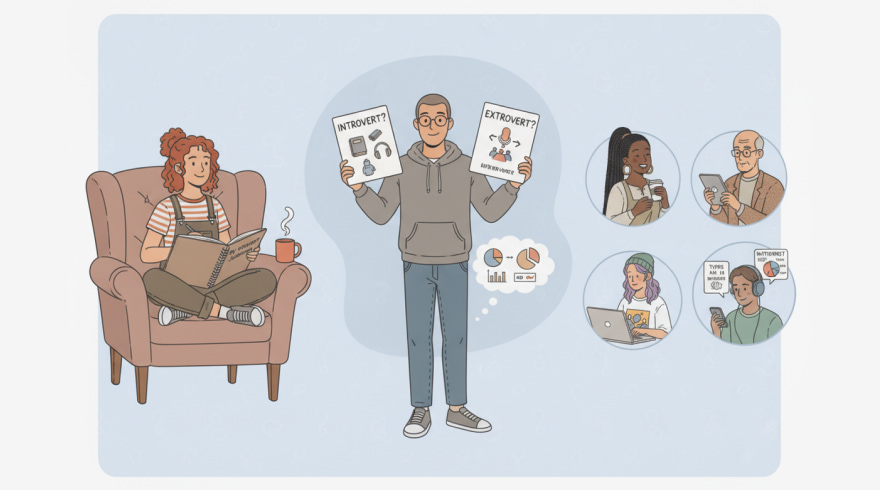Understanding Introversion: A Deep Guide to a Quietly Powerful Disposition
- 29 October 2025

Introversion As a Real, Research-Backed Disposition
Personality researchers have studied quiet tendencies for more than a century, tracing how energy, attention, and motivation vary between people. Rather than a binary label, the idea operates on a continuum where social stimulation interacts with cognitive focus, emotional regulation, and sensitivity to environments. The result is a style that prioritizes depth over breadth, reflection over impulse, and purposeful solitude over nonstop buzz.
Many readers ask complex questions about terminology and scientific framing. In contemporary psychology, debates consider whether is introvert a personality label fits best as a trait, a cluster, or a temperament within broader models, and scholars typically position it as a measurable dimension. This vantage point explains why two quiet people can look very different in daily life, even while sharing a preference for low-stimulation contexts.
Evidence from longitudinal studies shows how attention patterns and sensory thresholds shape daily choices. Researchers describe an introverted personality as one that gathers energy from calm settings, values deep thinking, and cultivates selective relationships for authenticity. While pop culture sometimes caricatures quiet people as aloof, robust data paints a more nuanced picture where focus, restraint, and careful planning become signature strengths.
- Energy often rises in calm, predictable spaces.
- Conversation favors substance, nuance, and attentive listening.
- Recovery time after intense social events safeguards mental clarity.
- Boundaries protect creativity, curiosity, and sustained concentration.
Core Signals, Misconceptions, and Everyday Patterns
Quiet-oriented individuals frequently excel at noticing subtle cues, from tone shifts to microexpressions others miss. That observational edge supports strong judgment, because thoughtful people cross-check facts and anticipate downstream consequences. Social motivation remains present, yet it tends to favor meaningful exchanges over frequent small talk, especially when time and energy are limited.
Comparative frameworks highlight important complementarities across people. When mapped together, introvert and extrovert personality traits illuminate how collaboration benefits from both deep analysis and quick activation in different phases of a project. Teams thrive when they route brainstorming, planning, and execution to the style that performs each stage most efficiently.
Labels should never erase individuality or reduce human complexity. A clinician will avoid pigeonholing any introvert personality type as shy or detached, because the underlying drivers may be strategic, sensory, or simply preference-based rather than fear-driven. Accurate understanding prevents self-fulfilling myths and opens room for situational flexibility.
- Depth-first thinking supports quality decisions under uncertainty.
- Selective socializing fosters trust and psychological safety.
- Focused work windows enable mastery and craftsmanship.
- Calibrated risk-taking balances innovation with prudence.
The Benefits: Strengths That Amplify Work, Learning, and Relationships
Organizations increasingly prize concentration, emotional intelligence, and ethical judgment, making quiet strengths more visible and valuable. When distractions multiply, the ability to sustain attention becomes a true competitive advantage, particularly in research, product strategy, and complex problem-solving. In families and friendships, thoughtful presence and reliable follow-through nurture long-term bonds that weather stress.
Within cross-functional teams, introvert personality types often stabilize discussions with careful synthesis and incisive questions that uncover missing data. This steadying influence reduces avoidable errors by forcing plausible assumptions to meet evidence, and it improves fairness by ensuring quieter stakeholders are heard.
Leadership also benefits from balanced social ecosystems. Managers who can interpret an introvert extrovert personality blend across their staff allocate tasks more intelligently and schedule recovery time strategically. That calibration lowers burnout, lifts engagement, and keeps delivery timelines realistic without sacrificing quality.
- Deep work produces novel insights and reliable execution.
- Thoughtful listening advances conflict resolution and trust.
- Preparation reduces risk and elevates decision clarity.
- Purposeful solitude fuels creativity and long-horizon vision.
Measuring the Spectrum: Assessments, Use Cases, and Interpreting Results
Modern assessments translate preferences into data points that managers, coaches, and individuals can use to align roles with strengths. Although no quiz can capture a full human story, good instruments triangulate across multiple indicators such as sociability, stimulation thresholds, and recovery needs. When interpreted with context, results become a compass rather than a cage.
| Assessment Method | What It Emphasizes | Best Use Case |
|---|---|---|
| Self-report questionnaires | Subjective preference patterns | Self-awareness and coaching |
| Observer ratings | Behavior in real contexts | Team fit and collaboration planning |
| Mixed-method interviews | Motives, narratives, and habits | Career transitions and leadership development |
Career changers often begin with a structured tool tailored to participation and stimulation levels. Many counselors suggest starting with a personality test for introvert extrovert preference profiles, because the language is accessible and the feedback is immediately actionable for scheduling, meetings, and communication norms.
Data-savvy readers may prefer instruments validated across diverse populations. In practice, a personality test introvert extrovert framework provides a baseline that can be refined with interviews, work samples, and journaling to capture nuance. Over time, patterns emerge that inform boundaries, collaboration rhythms, and leadership style.
Ambiversion, Blended Styles, and Social Agility
Many people display a mixed pattern: energized by small group interactions, drained by large crowds, and deeply productive in quiet blocks of time. Careers with cyclical demands, like consulting, product management, or clinical work, often reward people who can switch gears deliberately and then recover with purposeful rest. The key is not to chase a label, but to align environments with values and energy realities.
Some readers resonate with a hybrid identity that flexes across settings. Practitioners sometimes describe an introverted extrovert personality type when a person shows social ease yet prefers low-stimulation recovery, and that flexibility can be trained with mindful scheduling. In parallel, coaches might reference an introverted extrovert personality pattern to normalize context-dependent behavior without forcing a rigid binary.
- Plan high-stimulation activities near accessible recovery spaces.
- Batch collaboration into focused windows with clear agendas.
- Use deliberate transitions to shift between solitude and teamwork.
- Protect nonnegotiable quiet time to sustain long-run performance.
FAQ: Clear Answers to Common Questions
Is introversion the same as shyness?
Shyness is rooted in social anxiety, while quiet-oriented tendencies reflect energy management and sensory preferences. In practical terms, a reflective person may enjoy people and still need recovery time after lengthy gatherings to maintain clarity and well-being.
Can introverted people be effective leaders?
Yes, many leaders excel by listening, preparing, and making principled decisions that others trust. In fact, a team often benefits when a manager understands how a personality quiz introvert extrovert framework reveals diverse collaboration needs without stereotyping anyone.
How do I collaborate better with quieter colleagues?
Offer agendas in advance, provide written channels for input, and avoid unnecessary interruptions that fragment attention. You will see better outcomes when meetings allow thoughtful contributions alongside spontaneous discussion that still moves projects forward.
Which assessment should I start with if I’m unsure about my style?
Begin with a reputable tool and combine results with journaling about energy highs and lows across your week. Many readers appreciate how personality types introvert extrovert comparisons clarify preferences and point to small, high-impact habit changes.
What daily habits support sustained focus and balance?
Schedule deep-work blocks, cap back-to-back meetings, and build micro-breaks into busy days to prevent cognitive overload. These practices protect mental stamina and make space for creativity, reflection, and restorative social time.
Latest News
-
![The Complete Guide to Introversion–Extraversion Assessments]()
- 31 October, 2025
-
![Introvert–Extrovert Test: A Complete Guide to Understanding Your Social Energy Profile]()
- 30 October, 2025
-
![The Complete Guide to Introverts, Extroverts, and Ambiverts]()
- 28 October, 2025



